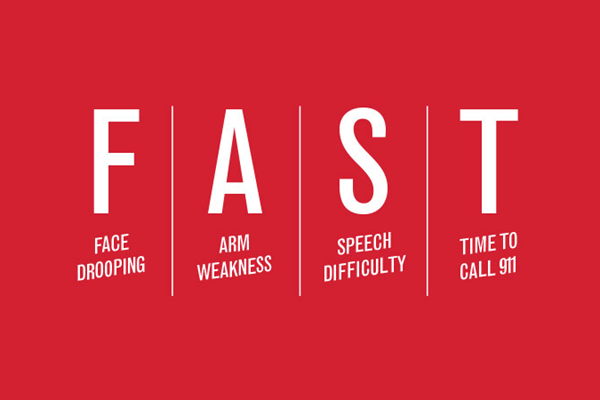Strokes- Risks & Action prevention
- Category: Stroke
- Posted On:
Learn Stroke Warning Signs and Save a Life
October is National Stroke Awareness Month. During this time, it is important to reeducate our community on steps they can take to prevent stroke and warning signs to help identify stroke early. Strokes are the 4th leading cause of death in the U.S. and a leading cause of long-term disability. Strokes kill more than 137,000 Americans each year but most people do not consider stroke a serious health concern.
The good news is up to 80% of strokes can be prevented through living a healthy lifestyle.
What is a Stroke?
Stroke occurs when blood flow to the brain is disrupted. Disruption in blood flow is caused when either a blood clot blocks one of the vital blood vessels in the brain (ischemic stroke), or when a blood vessel in the brain bursts, spilling blood into surrounding tissues (hemorrhagic stroke).
The brain needs a constant supply of oxygen and nutrients in order to function. Even a brief interruption in blood supply can cause problems. A loss of brain function occurs with brain cell death. This may include impaired ability with movement, speech, thinking and memory, bowel and bladder, eating, emotional control, and other vital body functions.
Recovery from stroke and the specific ability affected depends on the size and location of the stroke. A small stroke may result in problems such as weakness in an arm or leg. Larger strokes may cause paralysis (inability to move part of the body), loss of speech, or even death.
Stroke Warning Signs
According to the National Stroke Association (NSA), it is important to learn the 3 R’s of stroke:
- Reduce the risk.
- Recognize the symptoms.
- Respond by calling 911 (or your local ambulance service).
Stroke is an emergency and should be treated as such. The greatest chance for recovery from stroke occurs when emergency treatment is started immediately
Reducing Stroke Risk
You can reduce stroke risk by controlling treatable diseases that increase stroke risk:
- High Blood Pressure (if left untreated, high BP can weaken blood vessels and damage major organs such as the brain)
- Atrial Fibrillation (AF) (resulting irregular heart beat can lead to blood clots that can are carried to the brain, increasing stroke risk)
- High Cholesterol (High levels of cholesterol in the bloodstream can clog arteries and lead to stroke or heart attack)
- Diabetes (People with diabetes are up to 4 times more likely to have a stroke than someone who does not have the disease)
- Atherosclerosis (the progressive buildup of plaque in artery walls. It can clog arteries and block the flow of blood to the brain)
Lifestyle changes:
- Stop smoking and/or use of tobacco; smoking doubles your risk of stroke.
- Limit use of alcohol, drinking large amounts may increase risk of stroke.
- Obesity and excess weight increase risk for stroke.
Stroke Symptoms and Warning Signs
Learn the many warning signs of a stroke. Act FAST and CALL 9-1-1 IMMEDIATELY at any sign of a stroke. Use FAST to remember the warning signs:

FACE: Ask the person to smile. Does one side of their face droop?
ARMS: Ask the person to raise both arms. Does one side drift downward?
SPEECH: Ask the person to repeat a simple phrase. Is their speech slurred or strange?
TIME: If you observe any of these signs, call 9-1-1 immediately.
Stroke symptoms include:
- SUDDEN numbness or weakness of face, arm or leg – especially on one side of the body.
- SUDDEN confusion, trouble speaking or understanding.
- SUDDEN trouble seeing in one or both eyes.
- SUDDEN trouble walking, dizziness, loss of balance or coordination.
- SUDDEN severe headache with no known cause.
To learn more, download the 5 Key Facts About Stroke from the American Stroke Association


